NOTES
Tuesday, June 26, 2007
2160 Terrace/South Feeder
0090-0010
A still white sky, quiet morning other than a few chickadee/dee sounds, watching southward. Peanuts are placed to the very back of the trap with two piles, one each on the deck and bench below. Metal/Red-Green/Orange (my resident male) is waiting in the crabapple for peanuts along with his mate, Metal/Blue-Orange/Black and an unbanded bird. MB/OB has a very swollen left leg (mites) and holds it up, gingerly. Both of the resident pair are feeding on seeds, filling their gullets, then flying south.
Metal/Blue-Red/Green arrives, goes clear into the feeder (this will be an easy bird to trap) then flies southeast. Next, Metal/White -Black/White takes a peanut, perches above the feeder and carefully cracks the nut, placing the contents gently on the branch, taps into the nut, then wipes its beak. Resident female chases him/her, though mw/blackw is persistent. He comes back quickly, goes clear into the trap and I notice he's growing new tail feathers; they look worn. mr/gw arrives, eats his first peanut in the tree, then flies off SE.
MBlue/RG returns and shares the bench with the resident female, each taking a peanut and flying off. Resident female looks much older, grayer than MB/RG. Male begins calling, first cheep/cheep/cheep/cheep/cheep, than kwaaa/kwaaa. Metal/White-Red/Green comes, takes a peanut very quickly and flies off, southwest.
Fairly well developed pink-gaped juvenile arrives, takes a peanut off the bench, jumps down to the ground, then flies south.
Mw/rg returns, goes clear into the trap, drops a peanut to the ground, grabs one in his bill and flies westward.
Unbanded shopper, picks up/puts down, picks up/puts down.
Overall, relatively quiet morning.Purple/blue-metal/purple, a bird almost always here, not seen. After several seed trips, resident pair began choosing peanuts rather than seed. Two little chickadees busy in the tree. Lots of peanuts left as I end this observation.
Total Number of Birds: 7-8
A still white sky, quiet morning other than a few chickadee/dee sounds, watching southward. Peanuts are placed to the very back of the trap with two piles, one each on the deck and bench below. Metal/Red-Green/Orange (my resident male) is waiting in the crabapple for peanuts along with his mate, Metal/Blue-Orange/Black and an unbanded bird. MB/OB has a very swollen left leg (mites) and holds it up, gingerly. Both of the resident pair are feeding on seeds, filling their gullets, then flying south.
Metal/Blue-Red/Green arrives, goes clear into the feeder (this will be an easy bird to trap) then flies southeast. Next, Metal/White -Black/White takes a peanut, perches above the feeder and carefully cracks the nut, placing the contents gently on the branch, taps into the nut, then wipes its beak. Resident female chases him/her, though mw/blackw is persistent. He comes back quickly, goes clear into the trap and I notice he's growing new tail feathers; they look worn. mr/gw arrives, eats his first peanut in the tree, then flies off SE.
MBlue/RG returns and shares the bench with the resident female, each taking a peanut and flying off. Resident female looks much older, grayer than MB/RG. Male begins calling, first cheep/cheep/cheep/cheep/cheep, than kwaaa/kwaaa. Metal/White-Red/Green comes, takes a peanut very quickly and flies off, southwest.
Fairly well developed pink-gaped juvenile arrives, takes a peanut off the bench, jumps down to the ground, then flies south.
Mw/rg returns, goes clear into the trap, drops a peanut to the ground, grabs one in his bill and flies westward.
Unbanded shopper, picks up/puts down, picks up/puts down.
Overall, relatively quiet morning.Purple/blue-metal/purple, a bird almost always here, not seen. After several seed trips, resident pair began choosing peanuts rather than seed. Two little chickadees busy in the tree. Lots of peanuts left as I end this observation.
Total Number of Birds: 7-8
Subscribe to:
Post Comments (Atom)
Pia Sets the Trap
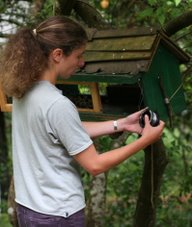
07/24/07
Peaking...
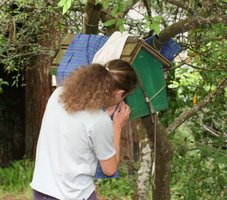
07/24/07
Oops, wrong bird!
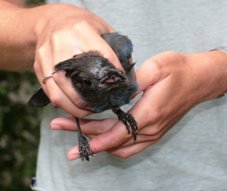
Demonstrating the "hold"
Try Again
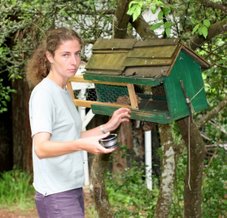
Bird in the Bag

Applying a metal band
Measuring

and more measuring. . . .
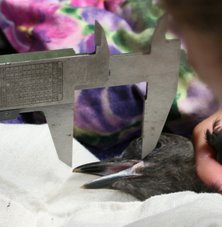
Blood Sampling
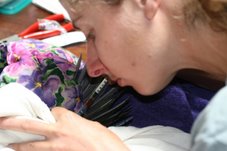
Jeff J's Work

Pia's test tube holder
Weighing

And then....release
When the sun goes down...
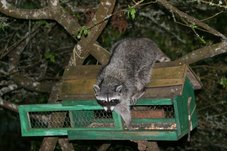
Steller's Jay Taxonomy/Description
Common Name: Steller's Jay
Class: Aves
Order: Passeriformes
Family: Corvidae
Genus: Cyanocitta
Species: Cyanocitta stelleri
Steller’s jay belongs to the family, Corvidae, in the Avian Order Passeriformes. Passeriformes is the order of perching birds. Corvidae is the jay, magpie and crow family. The Steller's jay's scientific name is Cyanocitta stelleri. The generic name, cyanocitta, means "blue jay". Its specific name, stelleri, named for George W. Steller (1709-1746). Steller was a German zoologist who explored the coastal areas of the northern Pacific Ocean in 1740.
Band Colors
black | white | purple | red | orangeBands are read in the following order:
light blue and light blue | green
Note: Light blue is difficult to read. It darkens with age, resembling a green band. (b/w/p/r/o/lb/g)
right bottom band
right top band
left bottom band
left top band
Data Collecting
This information was copied from the website of Dr. Jeff Black, Humboldt State University Wildlife Department.
The data to include for each record:
- Bird’s color code
- Size of social group seen at the same time
- Associates’ color codes (or if unbanded = UNB; or not determined = NOTD)
- Number of times associates came within 3 meters of each other
- Approximate time spent within 3 meter distance (e.g. 2 seconds, 15 sec, etc.)
- Total time you watched the birds (e.g. 5 minutes, 10 min, etc.)
- Time of day; start of observation (e.g. 1935)
- Date (e.g. 9.30.99)
- Location of observation (e.g. Rewood Bowl SW corner west bleachers. And state whether the bird was seen at a birdfeeder or in trees, etc)
- Comments (e.g. deformed leg, feather tuft on back, etc.)
Arcata Steller's Jay Sightings
Mr. Go

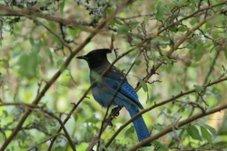
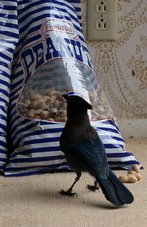
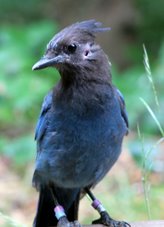
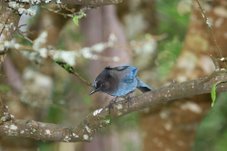
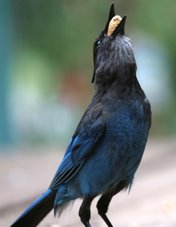
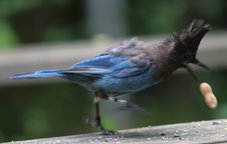
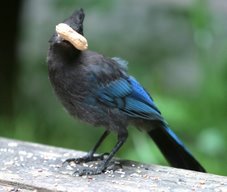
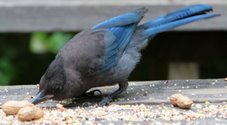
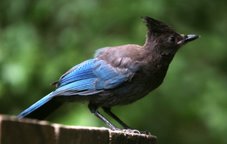
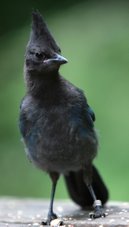

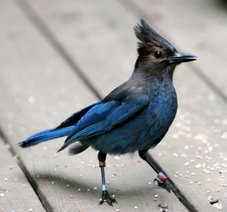
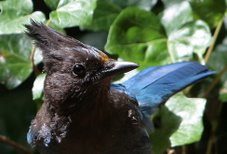
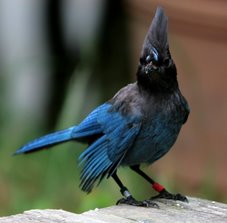
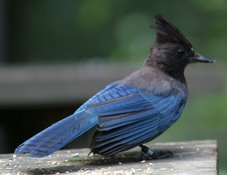
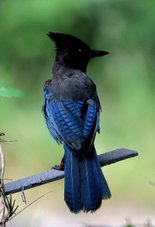
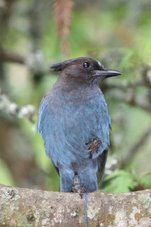
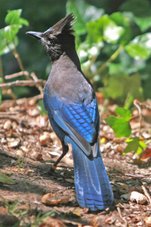
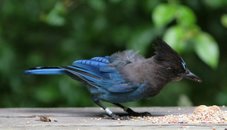
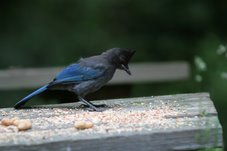
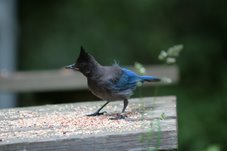
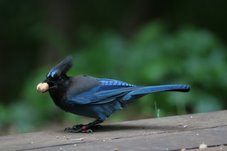
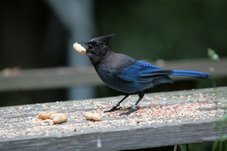
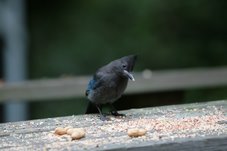
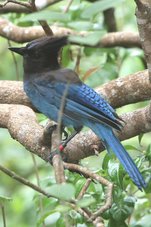
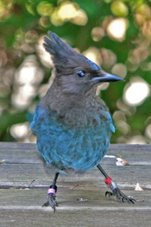
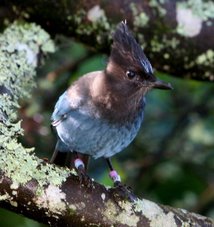
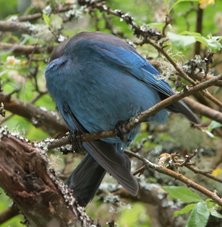
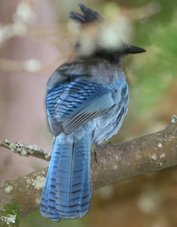
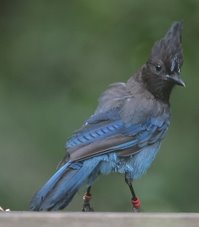
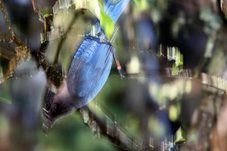
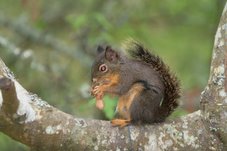
No comments:
Post a Comment